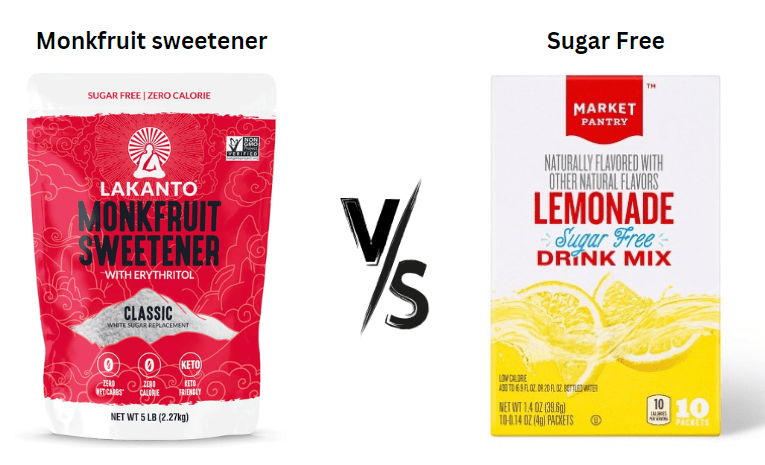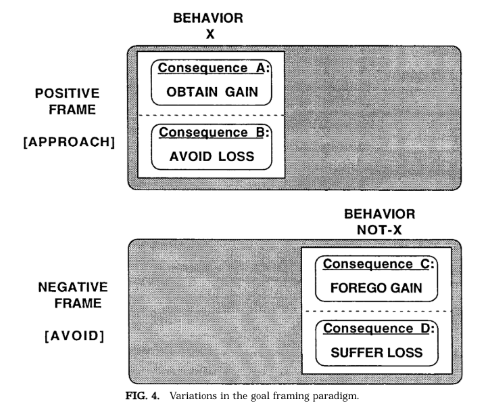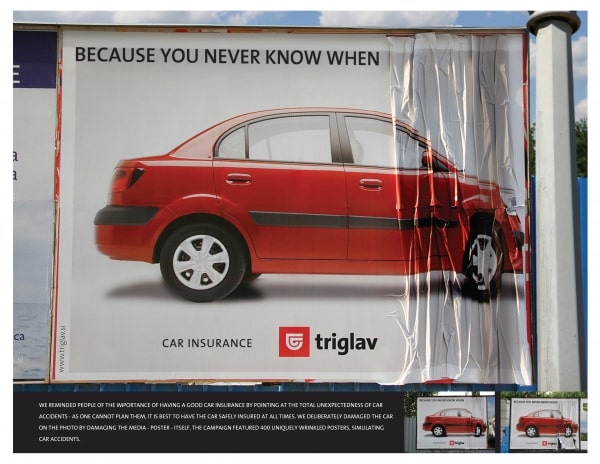The framing effect in marketing is a powerful cognitive bias that influences consumer perception and decision-making. This phenomenon, rooted in the Prospect Theory developed in 1979, shows that people are more affected by potential losses than equivalent gains. For decades, marketers have leveraged this technique to shape consumer behavior.
In today’s blog, we’ll gain more valuable insights into different types of framing – risky choice framing, attribute framing, and goal framing and have a better understanding of how these framing tactics can effectively influence customer decisions and achieve greater engagement and sales.
What is the Framing Effect?
It is believed that a negatively framed message in advertising results in higher behavioral intention such as making a purchase than a positively framed one.
The framing effect in marketing is a cognitive bias where people evaluate information differently based on how it is presented. In other words, marketers can influence customers’ decision-making process and perception by changing the context or “frame” around the message.
The framing effect originates from the Prospect Theory, developed by Daniel Kahneman and Amos Tversky in 1979. This theory challenges the traditional Expected Utility Theory, which assumes people make rational choices.
Traditionally, behavioral economics assumes that under a risky situation, people will choose the option that maximizes the utility or represents the most desired outcome of their decision. Yet, the Prospect Theory resists that human beings are risk-averse and influenced by potential gains and losses, leading to different decisions based on how options are framed.
This assumption is built upon the Loss Aversion theory which posits that people place more weight on losses than equivalent gains or we just tend to work harder and spend more effort to avoid losing something rather than gaining it.
With that being said, a message that is negatively framed in advertising will be more likely to affect customers’ perception and behavioral intention than the equivalent positive one since people often pay more attention to potential losses than possible gains.
For instance, a study on message framing effects on food consumption suggests that negativity-evoked adverts are more influential than benefit-focused ones in food consumption and exercise intention. Overall, researchers assume that although positive messages result in higher cognitive engagement, negative messages are often more persuasive in terms of behavioral intentions such as purchase intent or word-of-mouth.
However, the given opinion remains inconclusive as we have seen a variety of successful marketing campaigns that feature positively framed information. The following sections will provide a detailed picture of how marketers leverage the framing effect to secure marketing success.
Read More: All You Need To Know About Heuristics In Decision-Making
3 Types of Framing Effect and Their Marketing Applications
1. Risk Choice Framing/ Negative Framing
Risky choice framing refers to the way people’s decisions are influenced by the presentation of options involving risk, typically framed in terms of gains or losses. This stems from an experiment about the “Asian disease problem” by Tversky and Kahneman where participants were more likely to choose a certain outcome when the problem was framed positively (lives saved) and a risky outcome when framed negatively (lives lost).
Overall, this type of framing shows that our decisions will be more risk-avoidant when the message is presented positively while they will be more loss-avoidant when facing a piece of negative information.
For example, let’s consider 2 scenarios:
- 100% chance to gain $450 or 50% chance to gain $1000 (Positive Framing)
- 100% chance to lose $500 or 50% chance to lose $1000 (Negative Framing)
In the first scenario in which the information is presented positively (potential gain), it is believed that the majority of people will choose the first option (100% chance to win $450) as we know it is a definite gain, rather than the second one with higher value but more risky. Our decisions are more risk-avoidant in this situation.
In the second scenario with negatively framed information (possible loss), we tend to go for the loss-avoidant option, which is the second one. In this case, loss aversion affects our decision-making process and directs our attention to the fear of losing something.
MARKETING APPLICATIONS OF RISK CHOICE FRAMING

This advertisement from Bet365 demonstrates how presenting betting options in a positive side of the risk choice framing can make the risks seem less daunting, thus enticing new customers to sign up and participate more actively.
Since people’s decisions are more risk-avoidant when it comes to betting, using positively framed offers is more effective and persuasive. Offers that highlight potential gains, such as “Bet $5 Get $150,” or provide a safety net, like “Safety Net $1000,” tend to reduce anxiety and risk aversion, making customers feel more at ease and likely to spend larger amounts than they might otherwise.
2. Attribute Framing
Attribute framing focuses on how different attributes of a product are presented and how that presentation influences consumer perception. Unlike risky choice framing, attribute framing doesn’t involve a choice between options but rather an evaluation based on the framing of an attribute.
For instance, the experiment by Levin in 1987 in which people were asked to evaluate 2 meat product packages shows that product description conveyed in a positive framing “75% lean meat” was perceived as leaner, healthier, and less greasy than an equivalent negative framing – “only 25% fat”.
This type of framing highlights the impact of descriptive valence on perception, showing that positive descriptions tend to yield more favorable evaluations than negative descriptions. Levin also believes that mere exposure to positive associations can significantly contribute to the evaluation of a product.
Yoghurt A: “Contains 20% fat”
Yoghurt B: “80% fat-free”What would you choose at the supermarket?
(1/n) ☕️ pic.twitter.com/C60QRHjxDi
— Finshots (@finshots) January 2, 2023
MARKETING APPLICATION OF ATTRIBUTE FRAMING
In 2023, Zerbini et al. conducted a study in which consumers evaluated 2 similar fruit beverages that featured different nutritional claims. The first one includes “Only Fruit Sugar” exemplifying the positive framing while the second one uses a neutral phrase “No Sugar Added”.
The result shows that the use of the first claim that highlights the presence of fruit sugar inside the product improves customer perception in terms of healthiness, quality, and attitude toward it, up to increasing the purchase intent.

This study supports Levin’s perspective that positive framing results in favorable associations, leading to high purchase intent when it comes to attribute framing. Hence, marketers should be focused on positive claims on a single attribute of their products to increase their desirability.

3. Goal Framing
Goal framing is a powerful tool in marketing and persuasive communications, where the focus is on influencing the implicit goals that individuals adopt. Goal framing manipulates the perceived outcomes of behaviors or situations to influence decision-making.
Marketers use goal framing to show a positive outcome or a chance to avoid loss by performing an action (positive framing) or a negative consequence or the possibility of missing something by not performing it (negative framing) (See Figure).
Typically, positive goal framing works effectively when marketers want to trigger a sense of loss aversion among their consumers, driving their behaviors to achieve benefits and avoid losses such as “Bet $50 Get $200 – Guaranteed”. Meanwhile, negative goal framing is influenced by the fear of missing out (FOMO) in which consumers are driven to act to avoid forgoing a huge benefit such as “Limited Time Offers”, “24 Hours Left”, etc.

This framing technique originates from the breast self-examination (BSE) experiment by Meyerowitz and Chaiken (1987). The authors found that women were more likely to engage in breast self-examination (BSE) when presented with information that highlighted the negative consequences of not performing BSE, compared to when they were presented with information stressing the positive consequences of performing BSE.
Overall, both framing conditions promote the same action but through different motivational pathways. Yet, goal framing should be focused on negative framing, showing consumers the adverse consequences of not acting in a certain way to optimize the objectives of marketing campaigns.
MARKETING APPLICATION OF GOAL FRAMING
Insurance companies often use goal-framing techniques to persuade customers to purchase policies by predominantly focusing on the potential negative outcomes of not having insurance, rather than the positive benefits of being insured.
Campaign: Because You Never Know When – Triglav

The OOH campaign “Because You Never Know When” by a car insurance brand Triglav leverages the goal framing to emphasize the unpredictability of car accidents and the potential negative outcomes of not being insured.
Instead of providing customers with a clear benefit pack including what the insurance is about, the campaign cleverly visualizes the consequences, playing on the anxiety of being unprepared for sudden accidents, encouraging individuals to purchase insurance as a safeguard against the unknown.
Academic sources for this blog:
Levin, I.P. (1987) Associative effects of information framing. Bulletin of the Psychonomic Society. 25(2), pp.85-86.
Levin, I.P., Scheneider, S.L., and Gaeth, G.J. (1998) All Frames Are Not Created Equal: A Typology and Critical Analysis of Framing Effects. Organizational Behavior and Human Decision Processes. 76(2), pp.149-188.
Tversky, A. and Kahneman, D. (1981) The Framing of Decisions and the Psychology of Choice. Science. 211(4481), pp.453-458.
Zerbini, C., Vergura, D.T., Luceri, B., and Cristini, G. (2023) Nutritional claims and framing effect: how does the way of communication impact on the product perception?. Boosting knowledge & trust for a sustainable business. 41(2), pp.39-53.
Sy Chu
As an analytical and creative marketing enthusiast skilled in customer analysis, content research and brand management, my passion is help businesses gain insights into their brand and marketing strategies to drive impactful outcome to their success.
